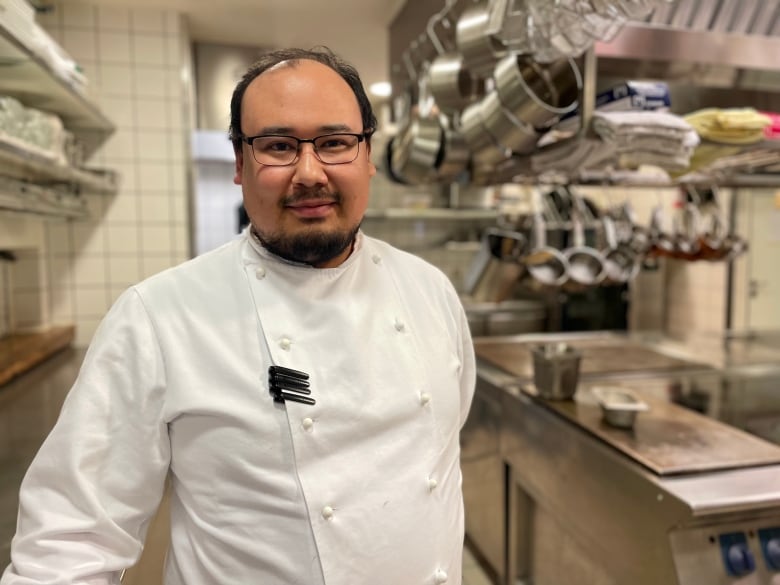What would it look like if you could buy maktaaq, muskox and seal meat at the grocery store?
Sheila Flaherty already knows — she saw it for herself in Nuuk, Greenland, back in 2019.
The Iqaluit chef and former city councillor recalls browsing traditional Inuit foods at the hunters’ market in Nuuk, where the catch of the day would be laid out on stainless steel tables. It’s available at the grocery stores and is served in restaurants.
It’s a memory that’s stuck with her over the years, and something she’d love to see become a permanent reality in her community.
“The restaurants here in Iqaluit, at least, there might be char, there might be caribou. But certainly in Nuuk, what I found is a better embrace of the whole spectrum of Inuit foods,” she said.
The response, when she posted the idea to Facebook, was mixed — traditionally, many Indigenous hunters share their harvest instead of selling it. Flaherty — who owns sijjakkut, a business that specializes in Inuit dishes, with her husband — does that too, giving away fish heads when she has too many to use in her cooking.
“With the cost of hunting and harvesting, to purchase directly from a harvester, it might help the hunter and harvester with bullets, with gas … or buying grocery food to help feed his or her family,” she said.
“Why can’t we have both, and celebrate both, and really create a new type of economy based on traditional Inuit cultural practices?”

Decolonizing cuisine
In Greenland, the wide availability of traditional foods for sale has helped in a way to decolonize cuisine, says Minik Stenskov, a waiter at the Sarfalik restaurant in Nuuk.
Stenskov, who is from Narsaq in Greenland, said serving country food requires chefs to have a deep knowledge about the animals and plants of Greenland and how they change with the seasons.
The menu at Sarfalik changes every three or four months, he explained, depending on the time of year.
“For example, right now the muskox is coming into season, along with the lumpfish roes. So those right now will be coming shortly, and we’ll have those more in our menu,” he said.
Once the snow starts to melt, herbs and berries will come into season as well and the menu will change to reflect that.
“It’s very fun, and it makes us proud that we can serve our own food to foreign people and be able to show what we eat,” he said.

Tina Karlsen is one of eight chefs at the restaurant and the only one from Greenland. Her non-Greenlandic colleagues often ask about the taste of various ingredients as they put together the menus.
“They want to have our opinions, what we think about the taste … then they try and make it, experiment, then suddenly it’s a dish — amazing dish,” she said.
Since the restaurant serves an international crowd, Karlsen said they also create non-Greenlandic dishes. But they always try to keep some local dishes on the menu.

Challenges persist
Flaherty knows that introducing something similar in Iqaluit would come with its own challenges, especially logistical ones.
Keeping enough food stocked for a regular traditional menu would be no easy feat, she noted — it would require a strong network with communities across Nunavut.
“If we were to have a restaurant, as an example, and seal meat is on the menu every day, that’s a lot of seals that need to be harvested,” she said.
She recalls working with the Nunavut Arts and Crafts Association to make seal sliders on bannock buns for Nunavut Day back in 2017. When she calculated how much meat she would need, it worked out to about 80 pounds.
“If you’ve ever seen a seal being butchered — especially small seals — they hardly have any meat,” she said.
They pulled it off thanks to the association’s territory-wide connections, making 500 seal sliders for the celebration, and Flaherty said she began to see people posting on social media making their own seal cuisine after that.
“It was a huge success,” she said.
Looking ahead, her vision for sijjakkut is to eventually put the ideas she got from Nuuk into practise, celebrating Inuit food in a bold way.
“Our primary focus is to preserve and protect and promote Inuit cultural practices and featuring harvested Inuit foods on menus,” she said.
“I’m so inspired by my time in Nuuk.”








